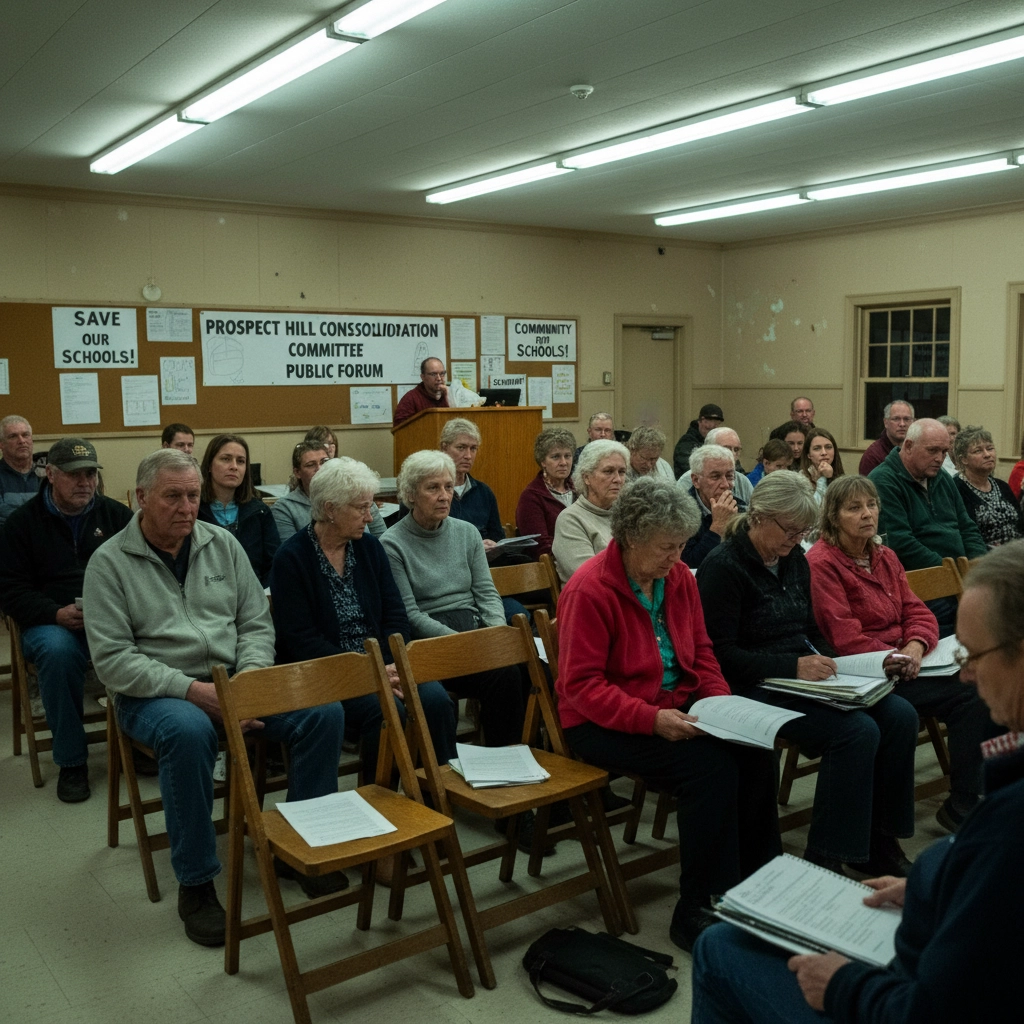Regional School Units in Maine: How They Came to Be, Why Towns Are Withdrawing, and What Happens Next (The Good, the Bad, and the Ugly)
- Community Blogger
- 2 days ago
- 5 min read
Regional School Units (RSUs) represent one of Maine's most significant educational reforms of the 21st century. These consolidated school districts emerged from 2008 state legislation that fundamentally transformed public education delivery across the state, creating both notable successes and considerable challenges that continue to influence Maine's educational landscape today.
The Origins: Maine's Consolidation Mandate
RSUs originated through comprehensive school consolidation legislation signed by Governor John Baldacci in 2008, designed to address Maine's fragmented educational system. Prior to consolidation, Maine operated 290 individual school districts, creating substantial administrative inefficiencies and cost burdens across the state.
The new law mandated that districts consolidate into larger Regional School Units, with the primary objective of reducing administrative costs through pooled educational resources across multiple municipalities. The legislation established a January 30, 2009 deadline for consolidation plans and required each RSU to operate under a unified structure where two or more municipalities combine their educational resources to serve students from kindergarten through grade 12.
Under this system, a single school committee comprised of representatives from each participating municipality administers the entire district through one superintendent of schools. This consolidation effort successfully reduced Maine's school districts from 290 to approximately 160, representing a significant restructuring of the state's educational governance.

The Good: Intended Benefits and Success Stories
The consolidation initiative achieved notable successes in several districts. Regional School Unit 16, formed by combining Poland, Mechanic Falls, and Minot, exemplifies effective consolidation implementation. Under unified leadership, these three towns developed cohesive educational vision and successfully addressed each community's unique needs.
RSU 16 restored programs that had been eliminated during the 2008 recession, including Spanish language instruction that had been cut due to budget constraints. The district demonstrated how consolidation could enhance educational offerings while managing costs effectively.
Regional School Unit 10 in Western Maine represents another consolidation success, covering 478 square miles and earning distinction as the largest school district east of the Mississippi River. Formed from the merger of Maine School Administrative Districts 21, 39, and 43, RSU 10 adopted the motto "Becoming One" and worked to create historical and contemporary connections among its twelve constituent towns.
Administrative efficiency gains proved substantial in successful districts. By eliminating duplicate administrative positions and sharing resources across larger geographic areas, well-functioning RSUs demonstrated potential for significant cost savings while maintaining or improving educational quality.
The Bad: Implementation Challenges and Community Resistance
Despite the consolidation deadline, many communities actively rejected their local school consolidation proposals. Resistance stemmed from several critical concerns that proved accurate in numerous cases.
Loss of local control emerged as the primary objection, with communities expressing concern about diminished voice in educational decisions affecting their children. This concern reflected Maine's strong tradition of local governance and community-based decision-making.
Financial concerns also drove opposition, as some districts faced cost increases rather than promised savings. The city of Brewer provides a clear example: while rejecting consolidation resulted in annual loss of $244,000 in state subsidies, approving the plan would have potentially cost $2.74 million in increased salaries over the first three years due to requirements to bring lower-paid teachers up to salary parity with higher-paid districts.
Geographic challenges became apparent in districts like RSU 10, where consolidation forced together communities with vastly different characteristics. While some towns had natural connections through the Androscoggin River Valley, other communities located "far to the south and literally on the other side of the mountains" were combined with relatively homogeneous River Valley communities, creating cultural and logistical tensions.

The Ugly: Current Withdrawal Crisis and Financial Realities
More than a decade after implementation, the consolidation experiment has led to more conflict than success in many districts. Current statistics reveal troubling patterns regarding the policy's long-term viability.
Since 2012, 33 towns have withdrawn from their consolidated school districts. More concerning, over 40 additional communities are either actively considering withdrawal or have attempted unsuccessfully to leave their RSUs. University of Maine professor emeritus Gordon Donaldson characterizes successful RSUs as "relatively rare."
The fundamental issue underlying many failures involves cost savings that failed to materialize. According to Donaldson, "few actually saved any money" from consolidation, undermining the primary justification for the policy. Additionally, many communities feared closure of local schools, which represented not just educational institutions but community centers and sources of local identity.
Financial Impacts and Tax Considerations
Tax implications of RSU membership and withdrawal present complex scenarios that vary significantly by community. Towns considering withdrawal must evaluate multiple financial factors:
Withdrawal Costs: Communities must assume full responsibility for educational funding, including special education services, transportation, and administrative functions previously shared across the RSU. These costs often result in immediate tax increases as towns lose economies of scale.
State Funding Changes: Withdrawn communities may experience reduced state subsidies, as funding formulas often favor larger districts. However, some towns find that direct control over budgets allows for more efficient spending aligned with local priorities.
Administrative Expenses: Standalone districts must establish or contract for services such as superintendent duties, special education coordination, and transportation management. These functions, when shared across RSUs, distribute costs among member communities.
Infrastructure Considerations: Towns must evaluate building maintenance, technology systems, and other infrastructure costs that were previously shared. Some communities discover significant capital improvement needs after withdrawal.

Case Studies: Withdrawal Outcomes
Several Maine communities have completed the withdrawal process, providing insight into actual outcomes versus projected benefits and costs.
Some withdrawn communities report improved local control and decision-making speed, allowing for educational policies more closely aligned with community values. These districts often cite enhanced parent and community engagement in school governance.
However, withdrawn communities frequently experience higher per-pupil costs due to loss of economies of scale. Special education services, in particular, present significant financial challenges for smaller districts that previously shared these specialized and expensive services across larger student populations.
Transportation costs also typically increase for withdrawn communities, as route efficiency decreases when serving smaller geographic areas without coordination with neighboring districts.
Legislative and Policy Response
The Maine Legislature has responded to withdrawal trends through various measures, including adjustments to withdrawal procedures and funding mechanisms. Recent legislation has attempted to address some concerns while maintaining the original consolidation objectives.
State officials continue to evaluate the balance between local control and administrative efficiency, recognizing that forced consolidation without community support creates unsustainable arrangements.
Future Outlook and Implications
The future of Maine's RSU system depends on addressing fundamental contradictions between state efficiency goals and local community values. Successful districts demonstrate that consolidation can work when communities develop genuine shared vision and maintain meaningful local input.
The high number of withdrawal attempts suggests that forced consolidation without community buy-in creates unsustainable arrangements. Future policy development may require more nuanced approaches that allow for voluntary consolidation, regional cooperation agreements, or hybrid models maintaining local identity within larger administrative structures.
Considerations for Buckfield
As a member of [relevant RSU - this information would need to be verified], Buckfield residents should understand these statewide trends and their potential local implications. Community members interested in educational governance may contact the School Board for information about current district arrangements and any ongoing discussions regarding educational policy.
The RSU experiment in Maine serves as an important case study in educational reform, demonstrating that fiscal logic and good intentions cannot overcome fundamental misalignments between state policy objectives and local community values. The continuing evolution of this system will likely shape Maine's educational landscape for years to come, with implications for property taxes, educational quality, and local governance across the state.
Sources: Maine Department of Education reports, University of Maine educational policy research, and various municipal government documents and studies on RSU implementation and outcomes.

